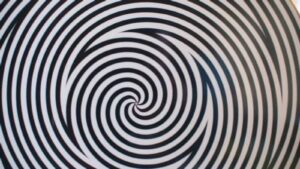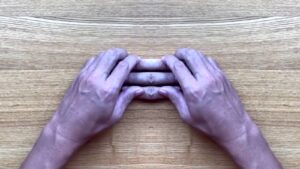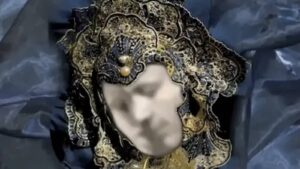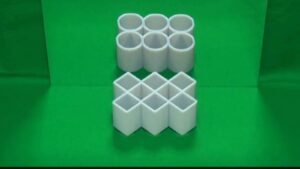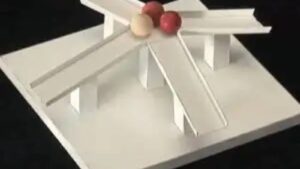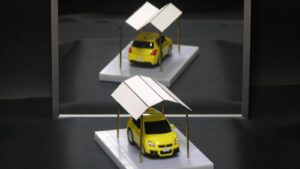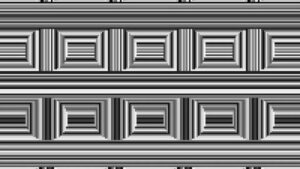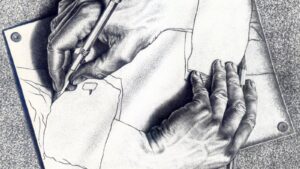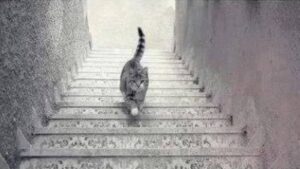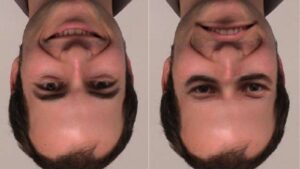Top 20 Mind-Bending Optical Illusions
Summary
Top 20 Mind-Bending Optical Illusions . One of the most important tools used by neuroscientists to understand how the brain creates its sense of reality is the visual illusion. Because of this disconnect between perception and reality, visual illusion facts demonstrate the ways in which […]
Top 20 Mind-Bending Optical Illusions . One of the most important tools used by neuroscientists to understand how the brain creates its sense of reality is the visual illusion. Because of this disconnect between perception and reality, visual illusion facts demonstrate the ways in which the brain can fail to recreate the physical world. Are you ready to play the mind game? This 2020 we will show you the top 20 mind-bending optical illusions.
Video: Top 20 Mind-Bending Optical Illusions
Dual Axis Illusion
This mind-blowing illusion, designed by Frank Force, has a structure that appears to be spinning around a vertical axis—until you’re shown a horizontal axis, then it switches to spinning around that. If you stare long enough, it also then appears to start spinning in the opposite direction. The magic trick to this illusion is that it will change depending on which cross-over or overlap of lines you focus on. This should be included in the textbook for educational purposes so that students can have grown their physiological knowledge.
Video: Top 20 Mind-Bending Optical Illusions
Change the color
This illusion from the University of Tokyo’s Haruaka Fukuda allows you to change the color of the dots in motion. In this illusion, either downward or rightward motion perception for the dots is possible. Depending on the perceived motion direction, color changes: red and green dots with downward motion and yellow dots with rightward motion. This suggests that our perception of color is not simply the result of limitations in the temporal resolution of the visual system. Indeed a creepypasta!
The Rotating Circle
In the Rotating Circles illusion, the true motion of the central circle is unchanging—it simply rotates around a central point. However, the added motion of surrounding circles leads the perceived motion of the central circle to appear “pulled” and distorted. Even though it is continuously rotating, by fixating on the white dot, the central circle can appear to move up and down, left and right, even in a triangle. This optical illusion is something that makes you see things in the periphery. Viewers can confirm that the central circle is always rotating simply by looking right at it.
Bodiject Fingers
Can you feel your fingers are objects, just like a pen or vegetable stick? This kind of thought experiment enables us to become aware of the fundamental difficulty of detaching ownership from our body voluntarily. “Bodiject Fingers” challenges such a cognitive barrier. This illusion is easily experienced by allowing a portion of the fingers to pass through an opening under the slightly raised mirror. Seeing and operating the symmetrically deformed fingers in this specific layout inspires a weird feeling where the fingers are transformed into strange objects or creatures.
Autokinetic Illusion
The autokinetic effect is a phenomenon of visual perception in which a stationary, small point of light in an otherwise dark or featureless environment appears to move. It was first recorded by a Russian officer keeping watch who observed illusory movement of a star near the horizon. It presumably occurs because motion perception is always relative to some reference point. In darkness or in a featureless environment, there is no reference point, so the movement of the single point is undefined.
Mask of Love
The viewer sees a picture representing a Venetian mask and is asked if he/she notices something special in it. A surprising number don’t notice that the main features of the mask are actually composed of two distinct faces: a man and a woman kissing one another.
Once the viewer discerns two individual faces, his/her brain will ‘flip’ between two possible interpretations of the mask, making the viewer perceive two faces or one face in alternation.
This kind of illusion, where the viewer experiences two equally possible, interchangeable, stable states in perception, is not a scary story but is called a “bistable illusion.”.
Ambiguous Cylinder Illusion
The direct views of the objects and their mirror images generate quite different interpretations of the 3D shapes. They look like vertical cylinders, but their sections appear to be different; in one view they appear to be rectangles, while in the other view they appear to be circles. We cannot correct our interpretations, although we logically know that they come from the same objects. Even if the object is rotated in front of a viewer, it is difficult to understand the true shape of the object, and thus the illusion does not disappear.
Impossible motion: magnet-like slopes
In this video, wooden balls roll up the slopes just as if they are pulled by a magnet. The behavior of the balls seems impossible, because it is against the gravity. The video is not a computer graphic but a real scene. What is actually happening is that the orientations of the slopes are perceived oppositely, and hence the descending motion is misinterpreted as ascending motion. This illusion is remarkable in that it is generated by a three-dimensional solid object and physical motion, instead of a two-dimensional picture.
Read More: Top 20 Lies You Still Believe
Ambiguous Garage Roof
A round roof of a garage changes its appearance to a corrugated roof when it is reflected in a mirror. The actual shape is neither round nor corrugated. This illusory solid was discovered by combining two observations. One is a mathematical observation that a single image does not convey depth information, and the other is a psychological observation that the human brain likes right angles in interpreting an image. Indeed we are apt to interpret the edge curve of the roof as an intersection of a roof with a plane perpendicular to the axis of the roof.
Coffer Illusion
First-time viewers of this display invariably do not see the 16 circles segmented from the background. The bright side is they see a series of rectangles that they frequently describe as “door panels.”. The illusion pits segmentation cues against what appears to be a very strong prior to interpret the image as a series of 3-D structures, “coffers,” with closed boundaries. It appears that the prior involves both closure and shape-from-shading assumptions. This most amazing illusion is a variation on Gianni Sarcone’s “Op Art illusion.”.
Oculus in the Camera degli Sposi of the Ducal Palace
To stand in the center of the medieval bridal chamber of the Ducal Palace in Mantua and look up is to see the enclosed space magically widen above you. Suddenly, a shaft of unalterably beautiful blue sky beckons through a round aperture rimmed with angelic figures. Impossibly, the barrier of the ceiling appears to have dissolved, revealing an invisible architecture that telescopes towards heaven, thrusting your soul in the direction of the divine.
Motion Integration Unleashed: New Tricks for an Old Dog
Previous illusions have demonstrated that drifting Gabors that translate across the visual field can appear to move in the wrong direction. Here we show that configurations of drifting Gabors that are stationary can give rise to dramatic global motion percepts: a rotating square, oscillating chopsticks, and rolling waves. Although the Gabors themselves are not changing position, the drifting motion within them causes the eye trick that the entire configuration is moving!
Drawing Hands by MC Escher
Used effectively, an optical illusion momentarily forces the observer to rethink the relationship between the real world that he or she inhabits and the one depicted in the work. No one understood the penetrative power of illusion better than the Dutch graphic artist MC Escher. In his mesmerizingly Meta Drawing Hands, Escher conjures magic from the work’s sketchy surface, a closed-circuitry of the-hand-creating-the-hand-creating, which appears to defy the limitations of two-dimensional drawing.
Colors & the circle
This magic image went viral in mid-July 2018 after its creator, University of Texas professor, Dr. David Novick, shared it on Twitter. Despite what you may see, it turns out all the circles are actually the same color. “The differences are subtle, though, and depend on the size of the image when it’s viewed; that’s the ultimate fact. Dr. Novick’s image, which he calls “Confetti,” is an example of a classic optical illusion known as a Munker illusion. According to Danish professor Michael Bach, the Munker illusion reveals how much our perception of color is influenced by other surrounding colors.
Person’s tattoo makes it appear like he has a giant hole
A photo of this tattoo went viral in February 2018 after it was posted on the subreddit r/Damnthatsinteresting. It’s not yet clear who the original artist behind the tattoo is. As INSIDER’s Jacob Shamsian explained, the tattoo’s design creates an illusion of infinite depth, thanks to the placement of “progressively smaller rectangles” on the inside of the spiral. Amazing optical illusion tattoo makes Utah man look like he has a large hole in the back of his head.
What color is this dresser?
In December 2017, Reddit user agamiegamer posted a photo of this dresser to the subreddit r/blackmagicf—ery. “What color do you see: pink and white or blue and gray?” the user titled the post. People were immediately torn, with some seeing pink and white, others seeing blue and gray, and a few seeing “very light blue-green and pink” or “lime green and gray.” Eventually, Reddit user agamiegamer revealed the dresser was actually painted blue and gray in real life. One definite best illusion to be in the chart of the top 5.
Star Wars Scroll Illusion
In the Star Wars movies, the opening sequence shows words scrolling from the bottom of the screen into the distant void of space. Here, we place two copies of a scrolling text side by side. Since the texts are identical, we might imagine that they would appear to run parallel to each other. What if we see one scroll appearing to move toward the upper left of the screen, while the other appears to move toward the upper right? Our brain’s rare interpretation of the 3D perspective therefore differs from our brain’s interpretation of the parallel lines on the screen.
Is this cat going up or down the stairs?
This another blow-your-mind photo of a cat went viral back in 2015 as people wondered whether the animal was going up or down the flight of stairs. Internet users used everything from architecture to biology to defend their answers to the hotly debated question. INSIDER’s Megan Willett, for example, broke down why the cat is “definitely” going down the stairs—and after reading her explanation on Business Insider, I’m convinced. This interesting fact is really something to be amazed at.
The Dalesmen Singers Illusion
Are the letters in the illusion actually moving? The answer is no, they are rock steady on screen! Only the letters brightnesses are changed, where the fill pulses alternatively between the black and white values of the edges. This creates a tiny impression of movement, which is then amplified in the viewer’s mind by optimization of the brightness and color values in the scene, together with different phasing of the letter fill luminance changes. These create uncertainty in the viewer’s mind, and the ability to pin down the precise spatial arrangement of the letters and so the sense of movement is increased. This amazing fact is worthy of being in the list of the top 10.
Read More: These HIGH PAID Jobs Will Leave You Speechless
The more-or-less morphing face illusion
The illusion mind comprises a morphing sequence between two faces. The observer has to fixate a dot superimposed on the morph. When the dot is moving, morphing can hardly be seen. However, when the dot suddenly stops, the morphing appears surprisingly strong. Subtle differences in, e.g., the shape of the eyes, the color of the skin, and even gender characteristics are “blown up” perceptually. Apparently, such differences between faces are easily overlooked when following a moving dot, but are highly salient when our eyes rest at a single point on the morphing faces.
Stretching out in the tub EXTRA
This illusion is based on a billboard showing a bathtub shot at an angle. As we walk from one end of the picture to the other, the bathtub seems to stretch and shrink. Why? Each change in location results in a different retinal image. When processed in the usual way, each of these images results in a different 3D percept. Walking past the real bathtub will also produce a series of retinal images, different from those produced by the picture. All of these images will elicit a single, common 3D interpretation and thus shape constancy.
So which one did you find the most interesting?


